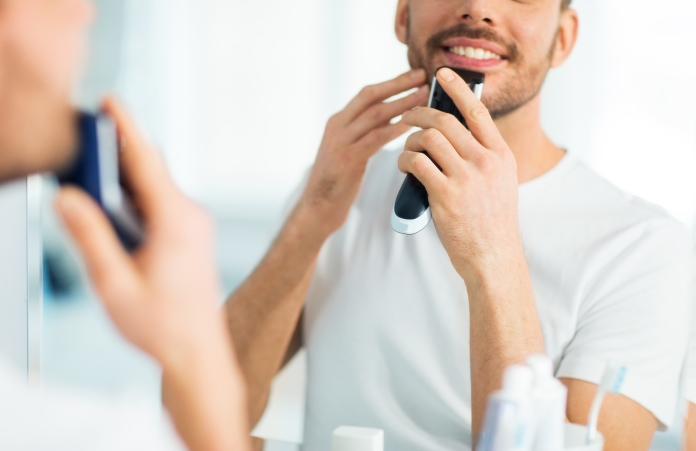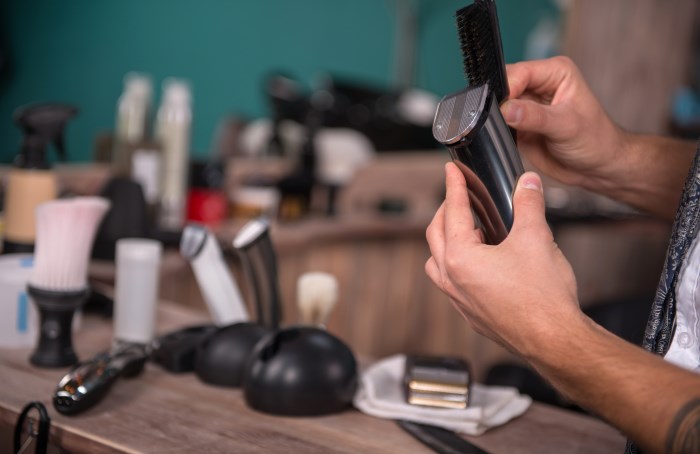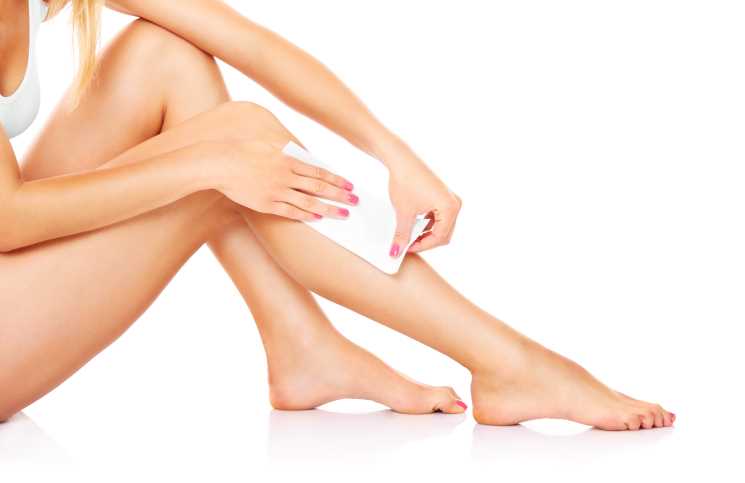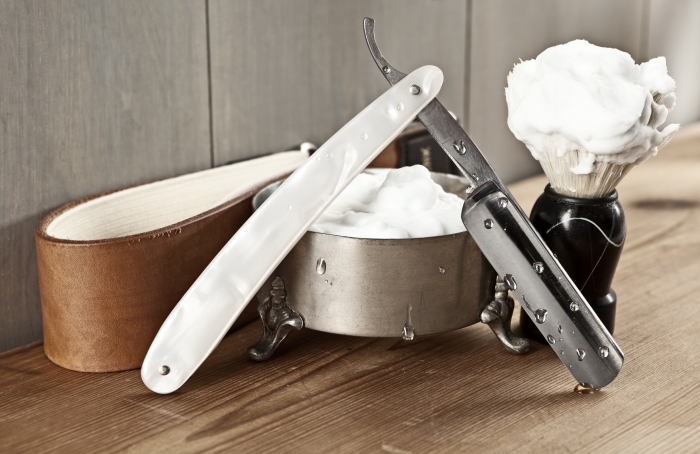Electric shavers often get a bad rap for doing a poor job and/or leaving skin inflamed and uncomfortable. Most of this bad press is due to zero pre-shave preparation, not using the shaver as directed, and a lack of a proper post-shave routine to care for your face and the shaver.
Here’s 6 tips to make your next electric shaving experience a pleasant one, rather than a nightmare!
1. Prep is important.
There are a number of wet/dry electrics out there, but the most popular electric shavers are still the cheap $20 and $30 varieties found at your local big box store on sale at Christmas time. While these shavers indeed get the job done, they’re not intended to be used on an unprepared face. Since you can’t use shave lotion to shave with non wet/dry shavers, you’ll need to ensure that your whiskers are bone dry, and free of dirt and skin oils.
A quality pre-shave oil like William’s applied to a clean and dry face will net you a cleaner shave while also reducing irritation such as bumps, scrapes, and ingrown hairs. Pre-shaves are designed to stand your whiskers up without making the face or hairs moist. Make sure the one you choose contains vitamin E and tea tree oil for the best results.
If possible, try to wash your face with soap and water around 10 minutes prior to shaving to get dirt and oils off.
2. Follow instructions.
Just like traditional barber shop shaves with a straight or dual edge razor, there’s a right and a wrong way to use an electric shaver. One big mistake men often make is to only use one hand to shave their entire face. The free hand that’s not gripping and moving the shaver should be used to pull your skin taught in the areas you’re shaving as you move from one spot to the next.
The next biggest concern is how the shaver is moved about the face. There are two kinds of electric shavers, and both require that you follow the included instruction on how best to use them. Rotary shavers are designed to be moved in concentric circles on the face; not up-down or side-to-side. Foil shavers are best used in the opposite fashion, using up-down motions to shave the hairs (though some are now designed to shave side-to-side too).
Always read your owner’s manual to see what the manufacturer says is the best way to use their specific shaver.
3. Tackle sensitive areas first.
Men tend to forget that they’re using a motorized machine, with steel blades coming within a millimeter of the steel heads that run along the surface of their skin. Add to that the fact that the motor and blades have to further deal with the friction generated by cutting all those thousands of hairs – with different thicknesses and densities – and you have all the ingredients needed for some serious heat!
Now, most shavers won’t heat up so much during an average shave that they’ll actually scald your skin. But what’s important to remember is that sensitive areas, especially the neck, can be irritated even by the mild heat created after first passing over tough-to-shave areas like the chin, jawline, and upper lip.
Many men shave from the top of their facial hair growth and finish on the bottom (ie., neck). If your neck or cheek areas tend to get razor burn, bumps, rashes, or other signs of irritation, do those areas first before the head of your shaver heats up. If your entire face is sensitive to the heat of the shaver, consider letting it cool off halfway through the shave, or consider buying a wet/dry to eliminate this problem once and for all.
4. The routine doesn’t end when the razor shuts off.
You’re not there just yet. Once you’ve finished actually shaving your face, the worst thing you can do is to call it quits and walk away. Shaving of any kind is highly irritating to the skin, and if you don’t have a post-shave routine, your face will always feel the burn – often for days afterward! If you shave every day, this can make the aftermath of shaving quite unpleasant to deal with.
There are a number of different aftershave lotions on the market that can make your face feel ten times better than the cheap astringents you’ll find at your local drug store like Old Spice, Gillette, Brut and the like. Stick to lotions or balms and don’t go cheap! A bottle of all natural Leather and Wood, Proraso, or Bay Rum will last you a long time and add moisture back into the skin rather than stripping even more away after shaving.
Then there’s the matter of cleaning up your shaver properly, so it doesn’t get gummed up with skin, hair, and irritants that will make your next shave a real bummer.
5. Clean and care for your shaver.
If you went all out when you bought your shaver and got one with an automatic cleaning stand, servicing your shaver is as easy as setting it up in the cleaning/charging stand and letting the equipment do its thing. If you cheaped out and bought one without, or are still using a monstrosity from the 90s, you’ll also need to include some basic maintenance time into your post-shave routine to keep your shaver clean.
If not, you’ll need to pop the heads off the shaver, according to manufacturer instructions, and use the cleaning brush that came with it to brush the hair and skin out of the shaver. Then rinse under warm running water (using the clean setting on your shaver, if applicable) for 30 seconds. If you’re serious about keeping the heads of the shaver sharp, clean, and well lubricated, apply some shave cleaner lubricant every shave or two as well.
6. Replace heads at recommended intervals.
Electric shaver manufacturers set their head replacement intervals according to countless hours of real world testing of their products. If they say to replace the heads every 12 months with regular use, make sure you do so. If you only use the shaver a few times per week, or once in a while, you can extend your replacement intervals by perhaps double what’s recommended.
However, if you start to feel like the blades are doing more pulling than they are cutting, don’t be so cheap about saving on new heads that you suffer every time you shave! Amazon always has great deals on replacement heads and you can almost always find a link to buy direct from the manufacturer.
One final bit of advice…
If your shaver still pulls your hair out even with new heads installed, it’s time to find a new shaver! There’s too many to count out there these days and, if you spend a few bucks, you’ll never regret the decision to upgrade.




